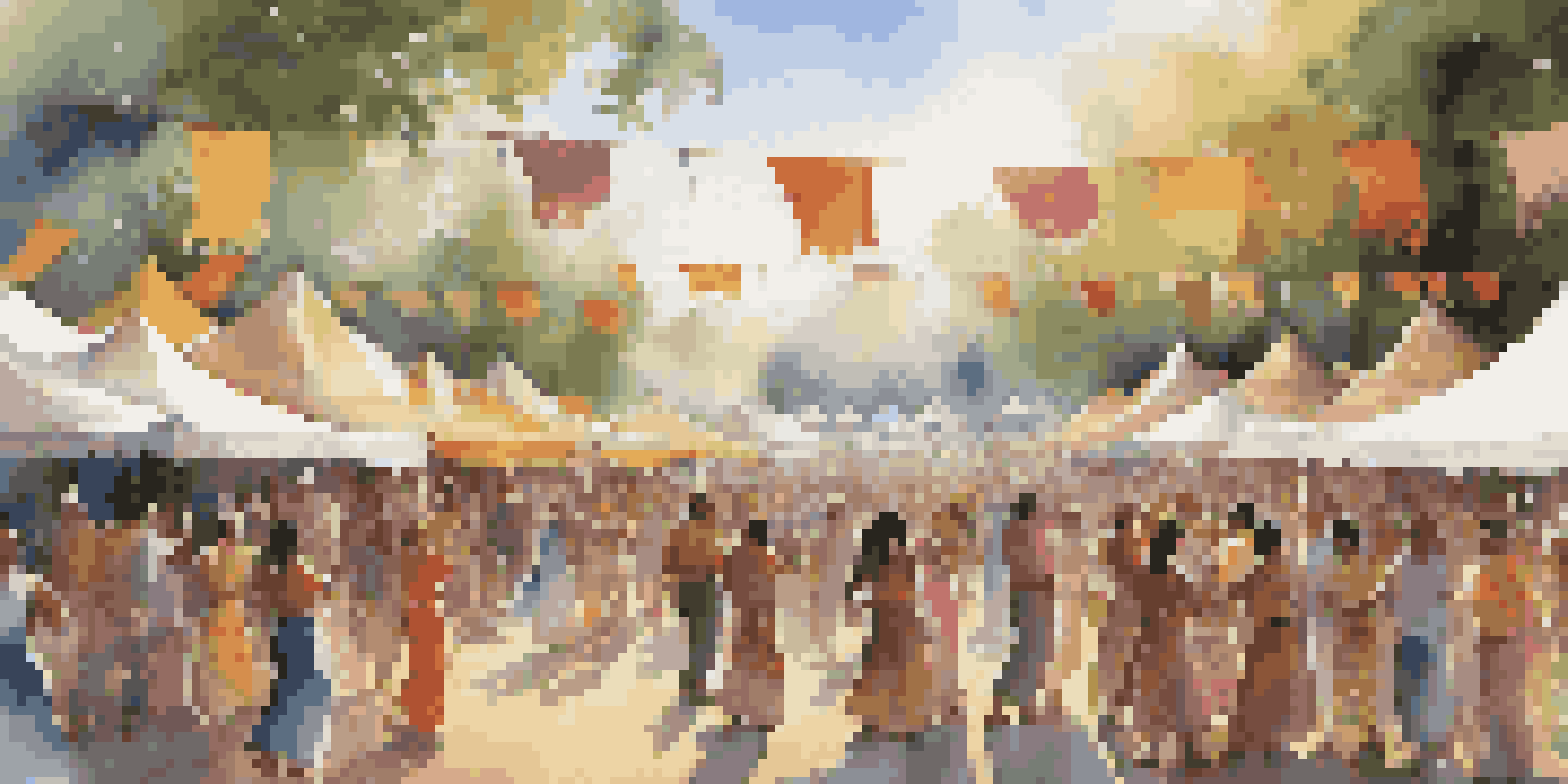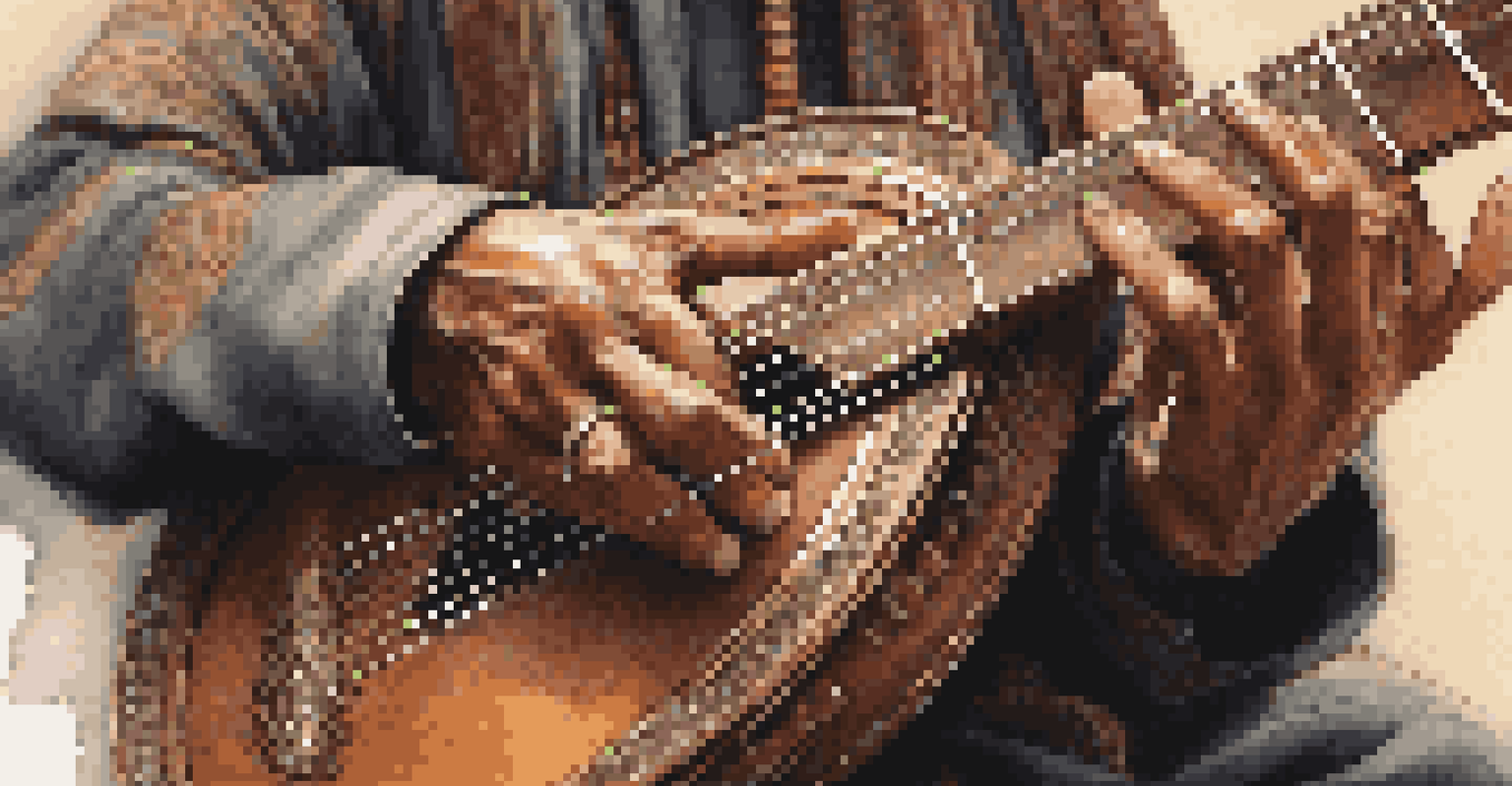The Role of Music in Cultural Preservation: Trends and Tools

Understanding Cultural Preservation Through Music
Cultural preservation is essential for maintaining the identity of communities. Music plays a critical role in this process by acting as a vessel for stories, traditions, and values. Through songs and melodies, generations can share their history and experiences, ensuring that their culture remains vibrant.
Music is the shorthand of emotion.
By capturing the essence of a community's experiences, music not only entertains but also educates. For instance, folk songs often tell tales of historical events, local legends, and even everyday life, giving listeners a glimpse into the past. This interplay between music and memory is vital for cultural continuity.
Moreover, music often transcends language barriers, making it a universal tool for connecting people across different backgrounds. Whether through traditional drumming, singing, or contemporary genres, the emotional resonance of music can unite individuals in a shared appreciation of their heritage.
Current Trends in Music and Cultural Preservation
In recent years, there has been a resurgence of interest in traditional music genres. This trend reflects a growing desire among younger generations to reconnect with their roots. Festivals, workshops, and community events often showcase these genres, fostering a sense of pride and belonging.

Additionally, the digital age has transformed how music is consumed and shared. Platforms like YouTube and Spotify have made it easier for traditional music to reach global audiences, paving the way for cultural exchange. Musicians are now blending traditional sounds with modern styles, creating a fusion that resonates with diverse listeners.
Music Preserves Cultural Identity
Music acts as a vessel for sharing stories and traditions, ensuring communities maintain their cultural identity.
Social media also plays a pivotal role in promoting cultural music. Artists can share their work instantly, allowing for wider recognition and appreciation of their heritage. This trend not only preserves traditional music but also encourages new interpretations that keep the culture alive and relevant.
Tools for Documenting and Sharing Cultural Music
The advancement of technology has introduced various tools that aid in documenting cultural music. Audio recording devices and apps enable musicians to capture their performances easily, ensuring that traditional songs are not lost over time. This accessibility has democratized the preservation process.
Without music, life would be a mistake.
Moreover, online archives and databases have emerged, allowing communities to store and share their musical heritage. Institutions like the Smithsonian Folkways Recordings provide platforms for artists to publish their work, preserving it for future generations. These resources are invaluable for researchers and enthusiasts alike.
Additionally, mobile applications have made it possible to teach traditional music in innovative ways. Apps that focus on learning instruments or vocal techniques can engage younger audiences, ensuring that cultural music is not only preserved but actively practiced.
The Impact of Globalization on Local Music Traditions
Globalization has introduced both challenges and opportunities for local music traditions. While it allows for cross-cultural collaboration, it can also lead to the dilution of unique musical styles. Many fear that traditional music may be overshadowed by mainstream global trends, risking cultural loss.
However, globalization can also foster revival and innovation. Artists are increasingly blending their local sounds with global influences, creating new genres that respect their heritage while appealing to modern audiences. This fusion can attract a younger demographic, ensuring the survival of traditional music.
Digital Tools Enhance Music Sharing
Technological advancements have made it easier for traditional music to reach global audiences, promoting cultural exchange.
Communities are also taking proactive steps to combat cultural erosion. By promoting local events and educational programs, they can reinforce the importance of their music traditions. In this way, globalization can serve as a catalyst for cultural preservation rather than a hindrance.
The Role of Music Festivals in Cultural Heritage
Music festivals have become crucial in celebrating and preserving cultural heritage. These events not only showcase traditional music but also provide a platform for cultural exchange. Attendees often leave with a deeper appreciation for the music and traditions of different communities.
Furthermore, festivals often include workshops and interactive sessions, allowing participants to learn about and engage with cultural practices. This immersive experience fosters a sense of connection and understanding, bridging gaps between generations and cultures. It’s a beautiful way to keep traditions alive.
In many cases, festivals also serve as economic drivers for local communities, attracting visitors and generating revenue. This financial support can lead to increased investment in cultural preservation initiatives, ensuring that music and traditions continue to thrive.
Educational Initiatives Supporting Music and Culture
Educational programs play a pivotal role in teaching the significance of cultural music. Schools and community centers are increasingly incorporating music education that emphasizes local traditions. This approach nurtures appreciation and pride among students, encouraging them to explore their cultural roots.
Workshops and mentorship programs led by experienced musicians can offer hands-on learning experiences. Participants gain valuable skills and knowledge about their heritage, fostering a deeper connection to their culture. These initiatives often create a sense of community, as individuals come together to celebrate their musical heritage.
Festivals Celebrate Cultural Heritage
Music festivals provide platforms for cultural exchange and education, helping to foster appreciation for various musical traditions.
Additionally, partnerships between cultural organizations and educational institutions help to amplify these efforts. By collaborating on events and programs, they can reach wider audiences and ensure that the importance of music in cultural preservation is recognized and respected.
Future Directions for Music in Cultural Preservation
Looking ahead, the role of music in cultural preservation is likely to evolve. As technology continues to advance, new tools will emerge to aid in the documentation and sharing of cultural music. This evolution will provide fresh opportunities for communities to engage with their heritage in innovative ways.
Moreover, as awareness of cultural preservation grows, we may see increased funding and support for initiatives focused on traditional music. Governments, NGOs, and private organizations are recognizing the importance of preserving cultural identities, leading to more resources dedicated to these efforts.

Ultimately, the future of music in cultural preservation lies in collaboration. By working together—across cultures, generations, and disciplines—communities can ensure that their musical heritage is celebrated and sustained for years to come. This collective effort will enrich our global tapestry of cultural diversity.